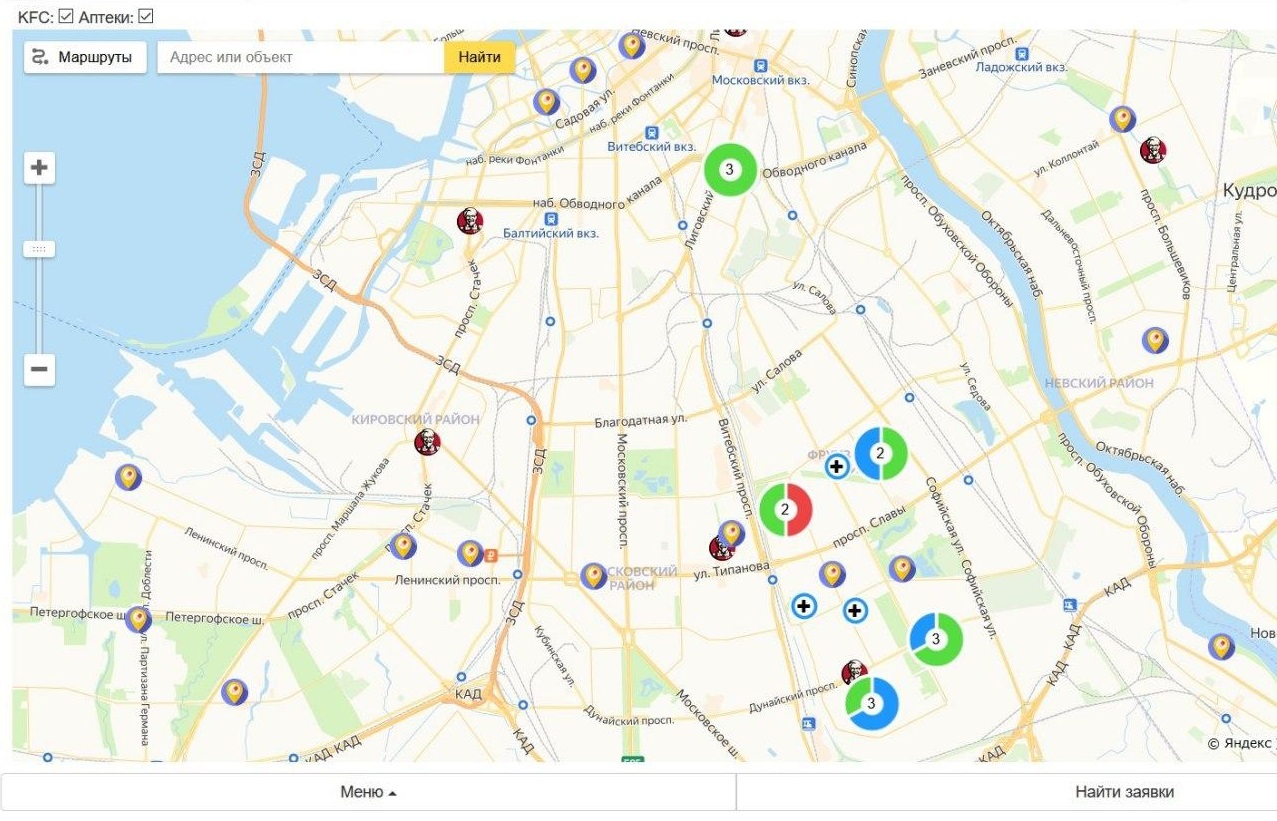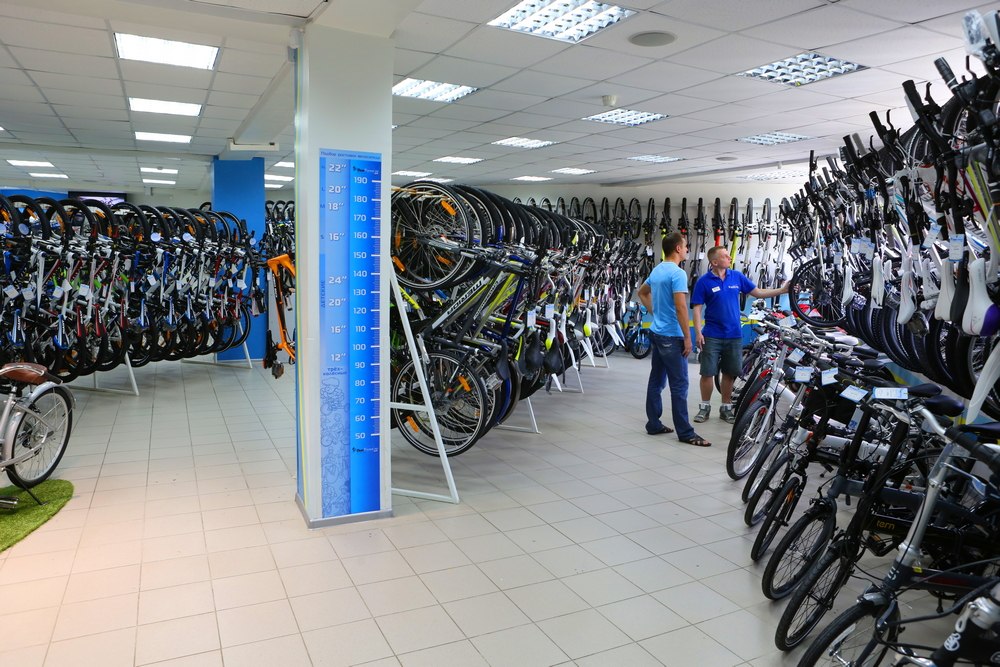
In June, Selectel and VMware launched the IT vs COVID-19 competition . We wanted to give IT specialists an opportunity to talk about the feats that they have done during the pandemic.
It was they, the multidisciplinary IT specialists, who had to urgently rebuild the working and business processes of companies. How to transfer work online if the company has not even appeared there before? How to set up remote access if you are not a system administrator but a teacher of mathematics and computer science? During the month, they collected stories - capacious and detailed, about big and small victories, from teams of 30 people and our large "cloud" colleagues. And now that most of them are archived as completed tasks, we publish the most revealing and inspiring ones.
At the end of March, remote work became a reality for most Russian companies. Three months later, people began to cautiously return to their offices - along with the experience gained during the quarantine. After analyzing the cases of the participants in the "IT vs COVID-19" competition, we compiled a general list of what the companies have been doing for the last three months. Let's head it with a quote from one of the participants - a system administrator from a St. Petersburg company.
"We plowed like fighting hamsters"
Surprised themselves
For many, the transition to remote work came as a surprise. Today you have over 300 people in your office, and by Monday they should all be able to continue working from home. In most stories, the feat of IT departments consisted precisely in the speed of decision-making and the willingness to take on sometimes non-core tasks. In addition to setting up a common VPN network, IT specialists conducted individual consultations for employees, helped to find and purchase equipment, and tested new work tools in a short time. Our personal favorite was the instruction for employees on how to connect to telephony called “Hello, Checkmark ?!”. Self-isolation did not affect the sense of humor of the employees of the investment and construction holding AAG. For everything about everything, there were one to three days, including weekends, and from 3 to 5 specialists for a considerable staff.
Were ready and not ready at the same time
The participants were divided into two camps: those who were “always ready” and those whose work did not involve a remote mode. One of the winners of the competition, the VeloStrana.ru company, began preparing for several months, correctly assessing the danger of the virus in Wuhan. Another participant - a brokerage company - is sure that you cannot foresee everything. There, employees of the IT department began to prepare in early March. By the middle of the month, they had set up the basic processes, thought over telephony and even formed instructions for employees. But after the official announcement of the self-isolation regime, it turned out that they were not ready for everything.
They noted the unobvious pluses of "removal"
Gathering people for meetings just got easier! This plus was noted by several participants of the competition at once. Previously, there were many factors affecting the presence of a person at the desk (lunch, smoke break, rest). During quarantine, employees were usually in the online access zone. The gathering time for general interviews has been significantly reduced.
Some companies have reconsidered their attitude towards remote work. As a systems analyst at a trucking company noted, their IT specialists have shown such high efficiency during self-isolation that they now have the opportunity to work from home several days a week. Many participants of the competition have lost their skepticism about the "remote".
For some, the pandemic has become a time of new collaborations, joint projects and actions, and reconciliation with competitors. Others have opened up new growth points and opportunities for call center employees to work around the clock from home.
Followed the rituals of the day and missed office teas with colleagues
One of the biggest challenges for employees who go to work from home is following a familiar work day. Dangerous proximity of bed and refrigerator is bad for time management. Participants in the IT vs COVID-19 competition also talked about how they solved this problem. Many have switched to time tracking systems (Bitrix24), introduced weekly reporting on work performed and mandatory day scheduling - all to maintain efficiency outside the office. One of the companies recreated the atmosphere of an open space, where each employee could speak directly to a colleague by voice, using the videoconferencing-supported messenger Discord, which is widespread among gamers. No Friday pizza, though.
Taking time to optimize
With the transition to "remote", some companies have decreased the volume of work. Spent the free time with benefit. Thus, a private clinic, where the work of departments was suspended by 80%, focused on the problems that had been put on the back burner. A Moscow-based online store development company decided to update its server park. Three old physical servers in one of the data centers were replaced with a leased one from Selectel.
Didn't forget about personal growth
As it turned out, self-isolation comes out not only with extra pounds, but also with new knowledge. After setting up the necessary systems and improving them, "IT specialists" had time for their own development. In the top - learning programming languages and mastering new tools.
Competition winners' stories
? . cool stories !
« »
, IT , .
, Volunteer Assistant
Together with friend Alexei Kataev, they created an application for a group of volunteers from St. Petersburg, which facilitated the logistics of delivering food and medicine to the elderly.
At the end of March, I joined the official volunteer movement of the All-Russian Popular Front. Among other volunteers, I helped the elderly by delivering the necessary food and medicine upon request. For four days I worked as a walking volunteer and was able to evaluate the system for distributing applications among volunteers. She was far from perfect. Volunteers received a table with addresses, and then they had to plot the best route from a set of unknown street and house names. This is where the idea was born of how to locally improve the work of volunteers through the public API Yandex.Maps.
My friend Alexey Kataev volunteered to help me. For implementation, we used a private Ubuntu + Nginx server with an external IP. A web application that works with the Yandex API was written in Java and adapted for mobile devices. For security, access was organized through a password - they were issued to accredited volunteers of the Frunzensky district. The application has become a superstructure over the processes established by the ONF.

Now volunteers have a dynamically updated map of the city with labels of open applications at addresses from the official table of the ONF. To facilitate filtering, the labels are distinguished externally by the categories of drug delivery, grocery delivery, and others.
Mikhail Afanasyev, head of the project office of the company "Defa Integration"
Created IT solutions for charity customers.
The real hero is our DevOps. In less than three days - from Friday evening to Monday morning - he set up all the remote accesses, SSH keys, VPN. The most important thing is that our servers survived and worked stably, despite the load. During the quarantine, many of our clients were forced to urgently look for new forms of work online - not only businesses, but also non-profit organizations. In a short time, we set up the functionality of collecting money for the fight and prevention of COVID-19 for the Vladimir Potanin and Contribution to the Future charitable foundations, and created a virtual exhibition for the Alexander Solzhenitsyn House of Russian Abroad Museum.
Nomination "Growth by parameters"
Here we asked to share stories about the growth of the IT infrastructure of companies during COVID-19.
, IT- «-»
With ease and professionalism we coped with the voluminous task of transferring employees to a remote work format.
The recipe for transferring a large insurance company to a remote location is simple. It is enough to have an excellent team of sysadmins and the appropriate management decision. In our case, this is an IT department consisting of five multidisciplinary specialists, distributed by regions and time zones. Since March 28, we have transferred about 1000 people to remote workplaces - from ordinary operators (with call forwarding) to accountants. Architecturally, we added several additional terminal servers to Windows Server 2019, and also got rid of the old RDP (Remote Desktop Protocol) on Windows Server 2016. Completely rewritten the balancer (HAProxy) in front of the terminal farm of users and additionally thought about security.
Florit Z., Mathematical Engineer, Polyethylene Chemical Company
He showed excellent knowledge of VMware, despite his seemingly non-core specialty.
After the appeal of the President of the Russian Federation, the management decided to transfer employees to remote work, as far as possible for production. We created remote desktops on our own resources, wrote a script to clone 500 virtual machines (VDI) from a ready-made template and automatically connect to the domain. Virtual machines were created on VMware vSAN Stretched Cluster. Then we performed deduplication (getting rid of duplicates) of all data located in the All-Flash cluster.
Nomination "IT Evolution"
In this nomination, we evaluated stories about the implementation and modernization of new information systems and services during a pandemic.
Vadim Nikolaev, Head of IT Operations Department, OCS Distribution
We transferred employees of offices in Moscow, St. Petersburg and regional business units to remote work, developed the infrastructure for supporting all business processes of the company - a corporate messenger, video conferencing services, an internal portal, and so on.
At the end of March, in just a week, about 200 laptops moved from our warehouse to the homes of our employees. Previously, we increased the width of the channels to the gates that provide terminal connection, and expanded the terminal farm with new hosts. In early April, we had approximately 1,100 concurrent RDP sessions during a business day.

The new format of work required the urgent launch of its own communication platform and the reorganization of the video conferencing service. The company has already used two - Cisco meeting server (CMS) and Microsoft Skype for Business (S4B). The number of virtual meeting rooms in CMS has increased 10 times, we have removed the restrictions for conferences and video calls in S4B, including through mobile devices. In April, a number of new online platforms were launched - portals for internal employee training and for partner events. In mid-May, we launched cloud Webex, and then, through the Webinar platform, our top managers held an online meeting with 2,500 company employees across Russia. Atlassian Confluence and Jira began rolling out in June.
Yuri Strelnikov, IT Director of VeloStrana.ru
We moved 22 stores online, and the entire staff of the call center - to remote work; coped with a sharp jump in the number of deliveries.
We have been preparing for a long time to move to new 1C servers. Since 2013, we have completely abandoned physical servers in our stores. Until February 2020, we worked on a blade server through virtualization and shared it with other tenants. But the company is actively growing, so we made a decision to lease two servers in the Selectel data center. At the moment, our 1C employs about 150-170 people and 22 stores. In April, about 120 employees worked from home via VPN. We plan to move to new, even more powerful servers by the end of the year.
During the pandemic, we had a sharp jump in the number of deliveries. This has never happened in 14 years of the company's work. We expanded our central warehouse, increased the number of employees to 40 people, in the normal season there were about 10-15 employees. They transferred him to a round-the-clock mode, taking into account all safety rules.

Finally, we have optimized the work with incoming requests from users. The most successful solution, in my opinion, was to create a channel in Telegram and connect a large number of employees there. We launched a chat bot that helps the buyer to choose a bike online, and set up a connection between the messenger and Jira (tasks were collected by the chatbot and sent to the system).
Unexpected nomination "IT-revolution"
, . , IT . , — .
.,
We transferred 498 students to online training without the help of an IT administrator.
The main difficulty was that most of the teachers were not ready for online work. Not everyone knows a computer at the proper level, and the methodological developments at school are not intended for a remote format. In addition, we had to work not only with PCs, but also with mobile devices. It was not easy technically, and we dealt with problems without specialized specialists.
So that teachers can see their students online, we rented a server and deployed the VideoMost platform. So we stopped depending on the load of free services, were able to independently control the load and, if necessary, quickly increase resources.
In parallel, they deployed Office 365 for employees and students and Google collaboration services for employees. Ammyy Admin was used to organize technical support.
Vyacheslav Okovalkov, system administrator of GAPOU College of Entrepreneurship No. 11 (Moscow)
More than 2000 students were transferred to distance learning, they did a great job worthy of professional admiration.
Our College of Entrepreneurship includes six branches - in different directions and addresses. On March 20, the management made a decision to transfer all employees and students to "remote work". And already from March 23rd, students could study from home using various gadgets - laptops, smartphones, tablets.
We created a VMware vSphere 6.7 cluster and six pods. Four of them are members of VMware vSAN. The cluster contains the entire infrastructure for remote work and study (Nested VMware ESXi).

To access external resources, we used VMware Horizon 7. Secure access to the infrastructure was provided using a Security Server. GLPI's Helpdesk, which was synchronized with AD DS (Active Directory Domain Services), helped centralize the collection of technical requests.
LMS Moodle was introduced for distance learning. Its functionality allows you to post methodological and practical materials: videos, presentations, lectures, laboratory work. Using the system, you can conduct online lessons through videoconferences. There you can also track student progress and keep track of attendance.
All calls to landline phones were forwarded to mobile phones, additional triggers were configured in the Zabbix monitoring system.
, ( )
More than 7000 students and 98 teachers were transferred to distance learning and wrote about it in a very exciting way.
After the beginning of global chaos, we were left, to put it mildly, overboard. Our department was then sent to a week of self-isolation. We thought that for a week ... The management asked to turn off all systems, disconnect absolutely all computer happiness! In total, only the guards remained in the building, the offices were sealed. The curtain.
A week later, COVID-19 is not over. It's a pity. But the work must continue. As a chief computer scientist, I needed to restore the operation of all systems as soon as possible, that is, yesterday. At the same time, I do not have access to the building - everything is completely closed from the word. Employees are sitting at home, the mood is at zero. But the plan to return from oblivion needs to be implemented somehow.
The first step was to set up a video meeting for key employees at Zoom. We found out who stays to work and who goes on vacation. It turned out that about half of the composition was in the ranks.
The commercial corporate messenger MyChat was used for communication within the department. It was easy to install it on a rented virtual server running Windows Server 2012R2. After I established the interaction of employees, I moved on to the issue of organizing file storage. In theory, it was possible to make a VPN to the office, but you cannot use office equipment, there is no access. Self-isolation in the yard.
This is where backup copies of files came in handy. Everything that was acquired through backbreaking work, fit on two external hard drives. I rented cloud capacity, started the file server pretty quickly. Created and distributed accounts to users. We had to wait the longest for the files to upload to the cloud. We agreed that first we fill in the most "burning", then everything else. The cloud is a good thing, but a very fast communication channel is needed to it, otherwise it is completely sad and lonely.
The work began to improve, but soon we realized that the employees' home appliances did not tolerate any criticism. Either he barely breathes, or there is simply not enough of it. At best, I had to remotely, using TeamViewer, install an office suite and tidy up the operating system. For some colleagues, I still had to order a virtual machine and connect them to the server via RDP. We decided that in a couple of months we would not go broke on paying for services.
As a result, almost without losing our nerves, we moved to new information rails. In May, the self-isolation regime softened slightly and employees took the working equipment home. It took a small rebuild of systems, and the work continued.
All this extraordinary situation forced us to reconsider the methods of information resource management. Everything that is done is for the best.
Igor Ivanov, Deputy Head of the Electrical Engineering Department at an energy company
Proven that in an emergency, you can become a system administrator, even if you are an electrical engineer.
Our organization is engaged in the design of substations and high voltage lines. In light of the impending threat, management took proactive measures and, a week before the general quarantine, gave the go-ahead for the transfer of employees to remote work. Unfortunately, our small organization does not have a system administrator position. And all the work on the organization of the "remote" had to be done by ordinary electrical engineers.
Due to the specifics of the workflow (all drawings of adjacent departments are linked by external links to quickly and accurately determine collisions), each employee must have access to the working server, as well as a set of software (AutoCAD, MS Office). We considered two options for working: remote control of a work computer (AnyDesk) or a VPN connection to a work network. We settled on the second option. Over the weekend, we organized VPN access to the working network, and on March 23, we set up software and connections for all employees remotely (using AnyDesk).
In addition to the working messenger (we use Skype), we began to use Zoom to organize meetings. The move was quick and as painless as possible for employees and the organization.